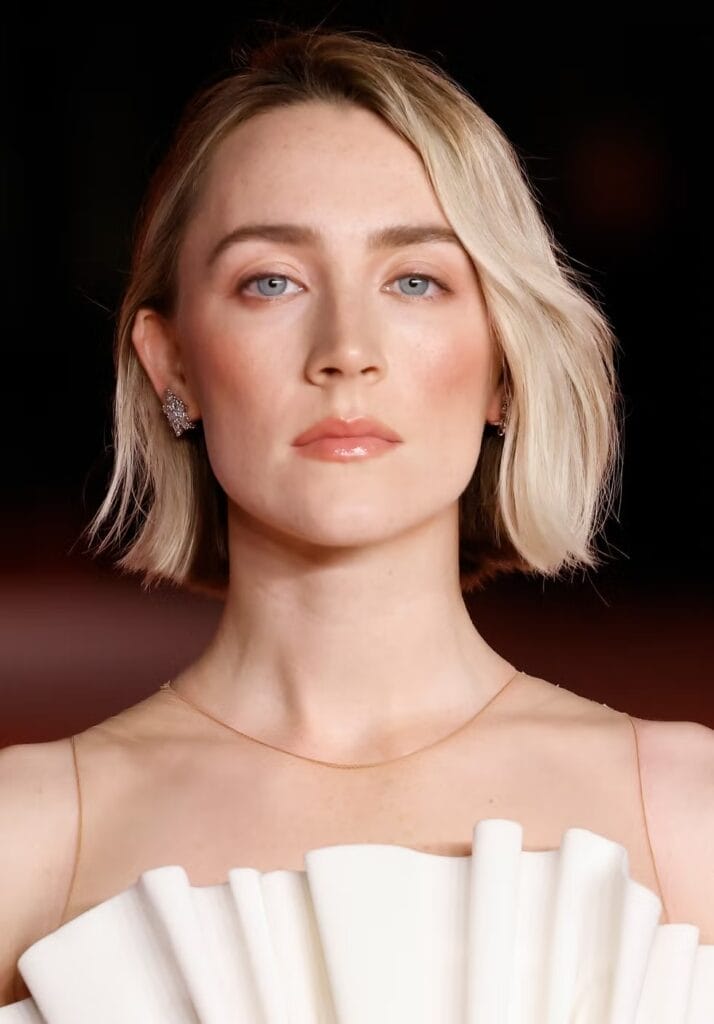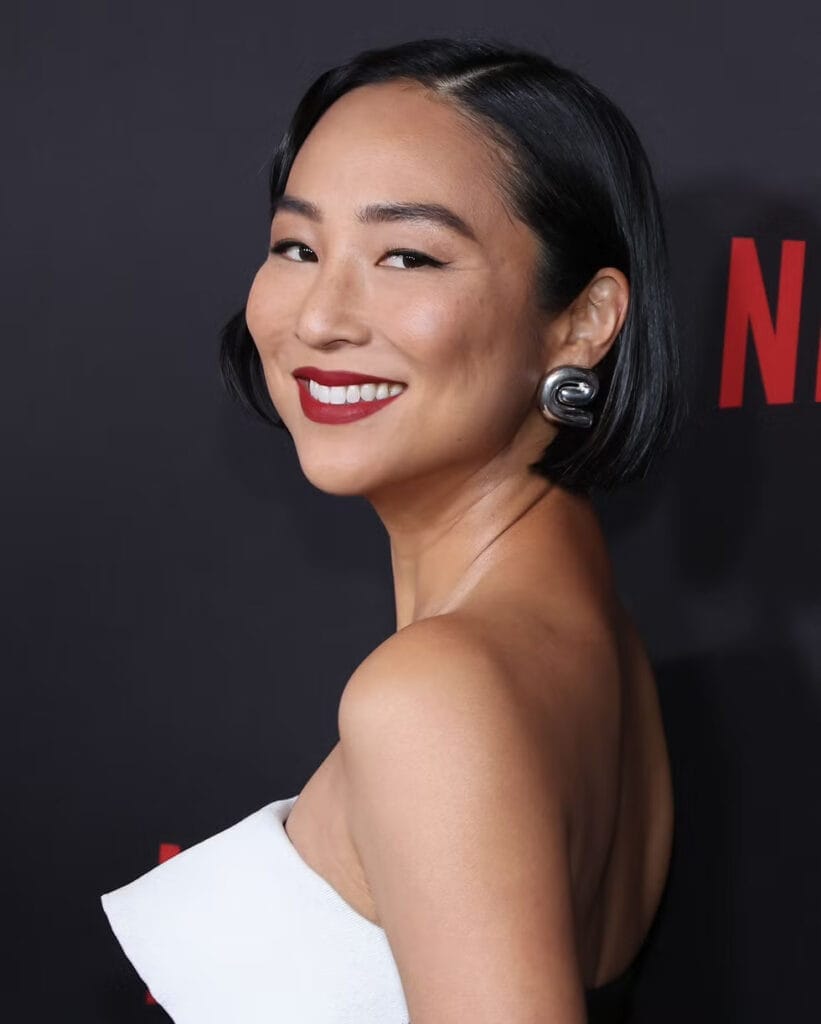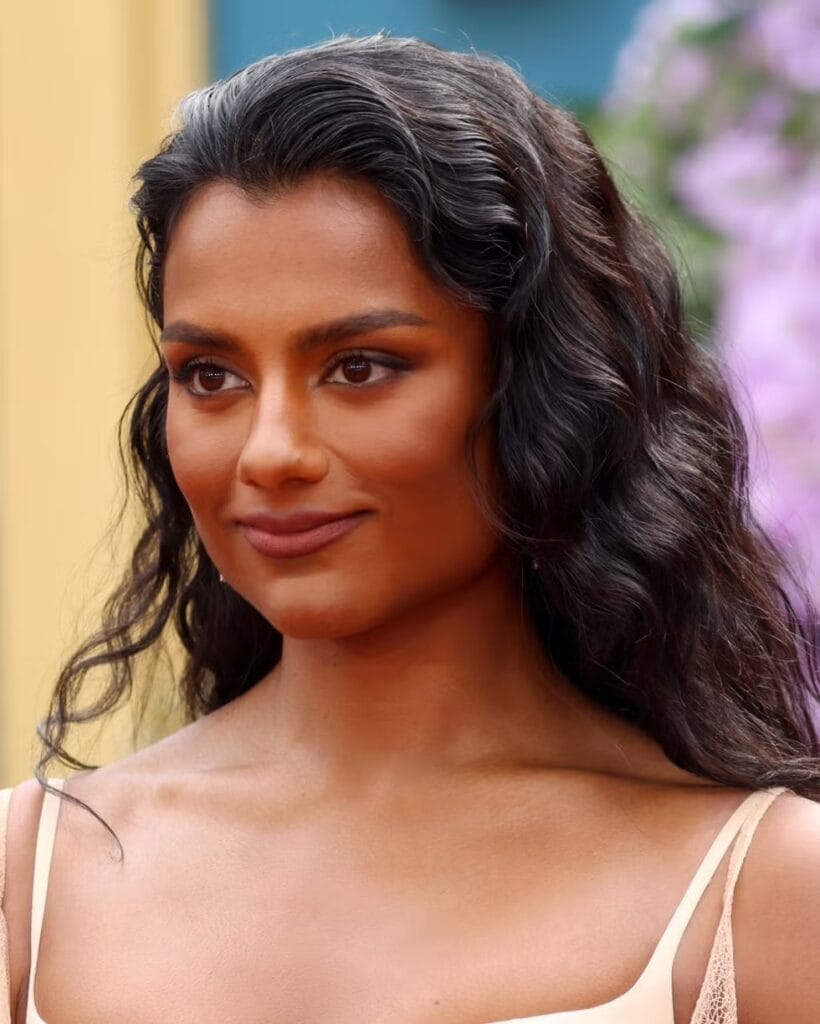Determining the intensity between your skin tone, hair and facial features could be the answer to better make-up
From determining your “season” (the nature-inspired colour palette that suits your skin’s undertones best) to understanding your “visual weight” (how the size of your features relates to your face shape), TikTok has been flooded with new, prescriptive ways to dictate the details of your make-up routine. It’s most popular diagnostic tool of late? A useful filter to help understand the depth of colour difference between your skin tone, hair and eyes, better known as “finding your contrast”.
The creator of the filter, and the trend, is the make-up artist Aliénor. “I used to have bad self confidence and when I did my make-up, I tried to follow tutorials or recreated celebrities’ or influencers’ make-up – and most of the time it didn’t look good on me,” Aliénor tells Bazaar. “When I learned to do make-up on clients, I learned to observe more and that is when I started noticing differences in contrast.”
After finding this technique, and discovering it made her feel more beautiful, Aliénor began to adjust the intensity of the make-up she was applying to her clients. “I then started explaining the concept on TikTok so that other women could learn about why they sometimes feel like their make-up is working against them. I got a lot of questions about how to find your own contrast, and that’s why I created a filter.”
So, whether you’re struggling to decide between low and medium contrast, or need examples to inspire your new-found make-up level, here we break down the details of TikTok’s latest beauty trend.
@alieenor My favourite glow up tip is playing with contrast to get more confidence ✨ #contrastlevel #mediumcontrast #highcontrast #emmawatson ♬ son original – Alieenor 🧡
What is “finding your contrast”?
“Contrast is a spectrum – it can go from very low to very high, but for educational purposes, I choose to differentiate low, medium and high contrast,” Aliénor explains.
Finding your contrast is about understanding the distribution of colour depth on your face. It refers to how much of a difference in intensity there is between your skin and your features. If you have a low contrast, you have very little difference between the intensity of your features; for example, you have a medium skin tone, fair hair and light eyes. If you have a high contrast, the difference in colour is very strong and visible – so you might have very dark hair and brows, set against a light skin tone. If you have a medium contrast, you are in-between.
The easiest method is to try the make-up artist’s specially designed TikTok filter, which shows your face alongside examples of different levels at various skin tones. If you’re still unsure, try taking a photo of yourself wearing no make-up in natural light, and then applying a simple black and white filter. This will highlight the different in colour depths.
What type of make-up look will appear best on each contrast level?
Low-contrast make-up
If you have low-contrast features, the difference of colour depth between your skin tone and the rest of your features (for example, your hair, eyes and eyebrows) is not very high. Using the picture method above, you would see that your face appears to be a similar greyscale; the effect is soft, and balanced.
“In low contrast, you see all your features at the same time; the eye isn’t focused on a specific part of the face, you see the person as a whole,” she explains. “If you have a low contrast, the goal is to keep the contrast low using make-up that is in the same intensity as your skin and other features. It doesn’t mean you have to wear ‘no-make-up make-up’ (in fact you can wear a lot of it), but the intensity should be similar to your natural features.

Taylor Hill//Getty Images Saoirse Ronan is an example of a low-contrast celebrity
High-contrast make-up
If you have a high-contrast face, there is a high difference of colour depth between your features.
“When there is a lot of contrast in your face, it can sometimes make you feel a bit dull, because it makes your face look more light. Adding intensity to parts of you face will balance the contrast and can help keep a more harmonious effect,” she explains. “If you have a high contrast, levelling the intensity is key, so that you have a less contrasted face: adding blush and bronzer, intensity around your eyes and on your lips, will help balance the face.”
If you’re not a fan of a heavy make-up application, she recommends to use a lip and cheek tint or a lipstick that is more intense than your natural tone.

Arturo Holmes//Getty Images Greta Lee has a high-contrast look
Medium-contrast make-up
If you have a medium contrast, your intensity will be somewhere between high and low, where the difference between your skin tone, hair colour and eyes will be obvious but not incredibly intense. To complement your face, you can add some colour to your cheeks, or pull off a slightly more intense lipstick, but you needn’t go in with a heavy hand or bold colours.

Lia Toby//Getty Images
Simone Ashley is an example of a celebrity with medium contrast
What is softening or intensifying your contrast?
“Softening your contrast is about balancing the face so that you see the face before your make-up. It is a good way to look natural, because the eye will see your whole face at once; you see the person’s beauty before you see the make-up. The goal is for people to tell you, ‘you look beautiful’ instead of ‘your make-up looks beautiful’,” Aliénor adds.
On the polar-opposite end, intensifying the contrast is about adding drama to the face. If you have a low contrast, adding intensity to your eye will draw attention to them. If you have a high contrast, exaggerating that difference between your skin tone and your features will add drama. “It’s more about creating a character than embracing and adapting to your natural features,” she explains.



